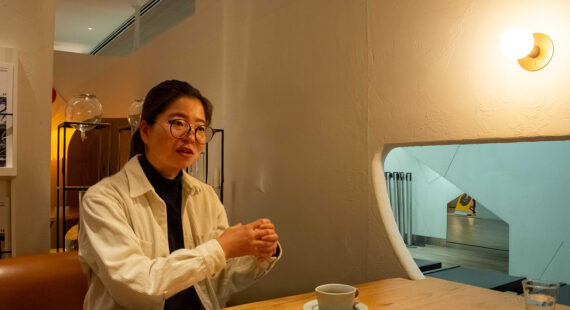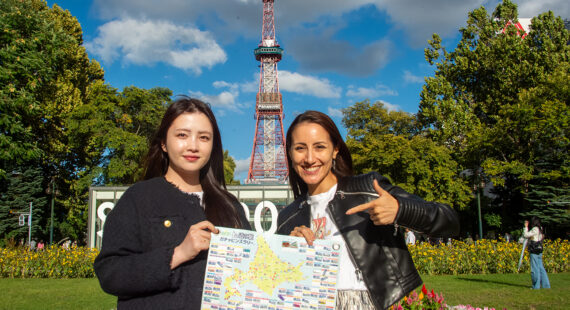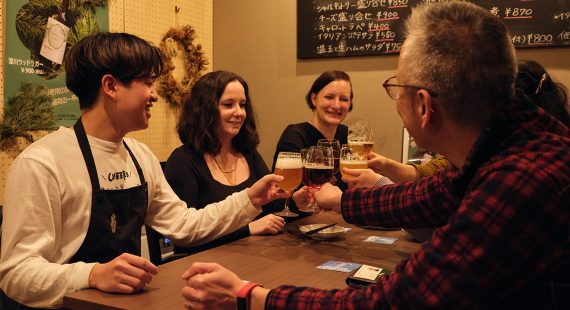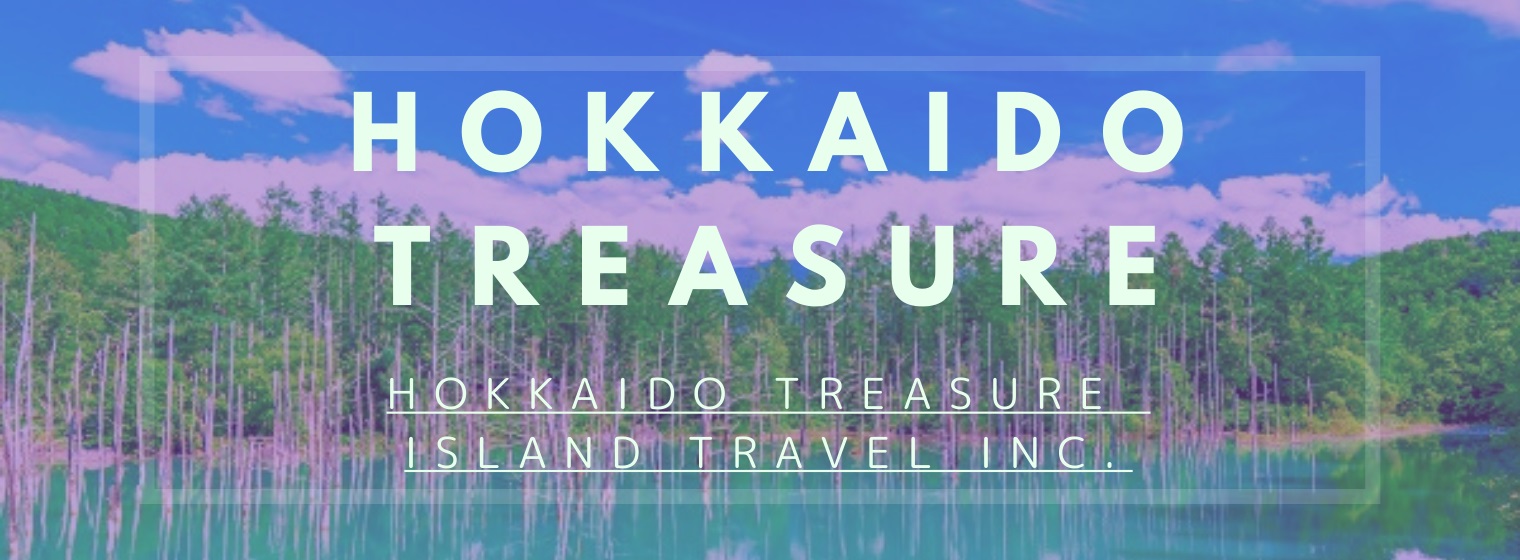Table of Contents:
1. Soba: The Culture and Flavour of Japan’s Beloved Noodle
2. Soba Is Just the Beginning: A World of Delicious Variations
3. See It, Taste It: The Seasonal Charms of Hokkaido’s Buckwheat
4. A Journey Through Hokkaido’s Unique Soba Culture
5. Try It Yourself: A Hands-On Soba-Making Experience
When it comes to iconic noodle cultures in Hokkaido, ramen is likely the first thing that comes to mind. But there’s more to Hokkaido than just ramen—we also have soba, Japan’s traditional buckwheat noodle! Soba has a rich history and cultural significance that goes beyond its simple appearance. Known for its nutty flavour and versatility, soba is a beloved staple in Japanese cuisine, celebrated for its health benefits and adaptability in countless dishes. Today, let’s dive into the vibrant soba scene in Hokkaido and discover how this traditional noodle continues to shape culinary experiences here. It will definitely make your journey even more memorable!
Soba: The Culture and Flavour of Japan’s Beloved Noodle
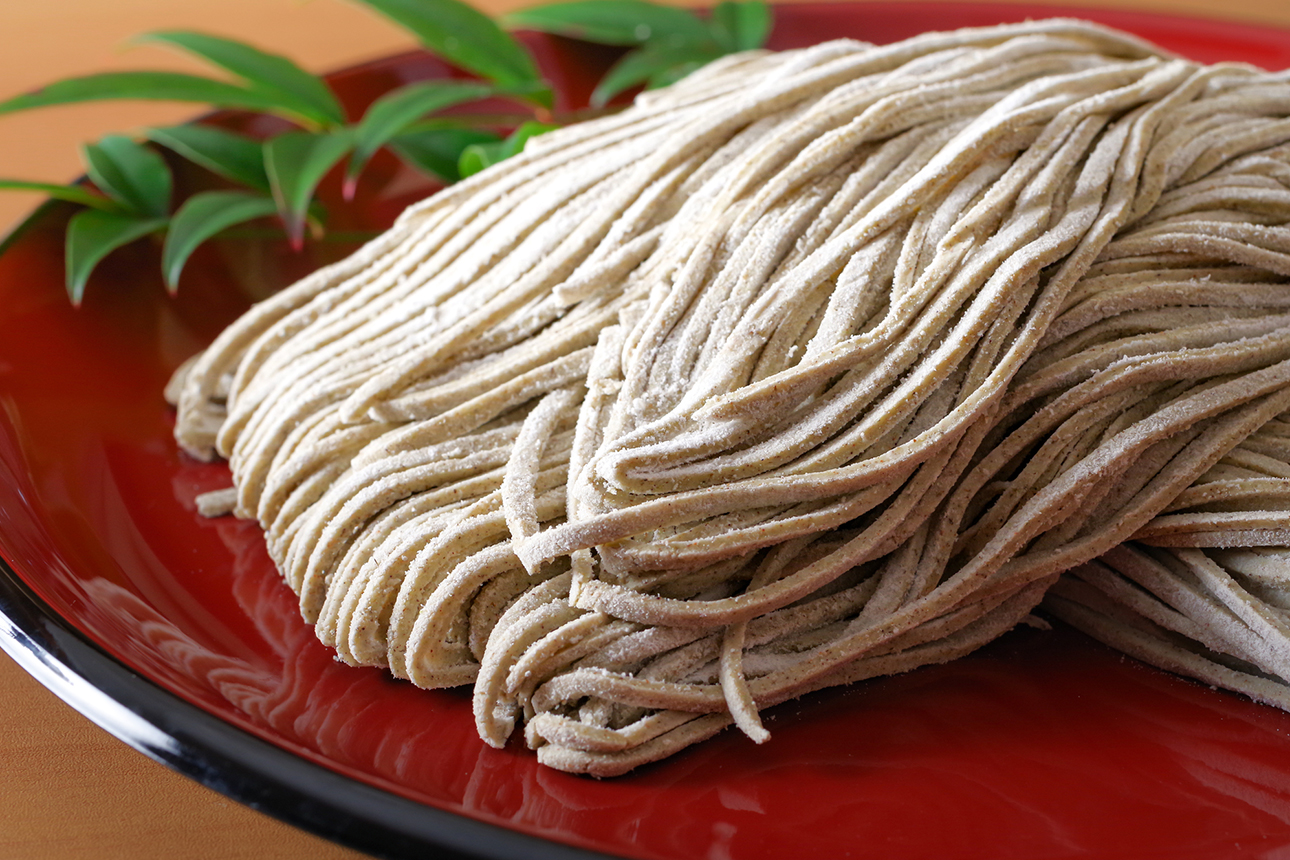
Soba has become one of the most iconic dishes in Japanese cuisine—but what exactly is it?
Buckwheat is a crop enjoyed in many parts of the world. In France, it’s used to make galettes, which are thin savoury pancakes. In Italy, pizzoccheri is a type of pasta made with buckwheat flour. In Russia and Ukraine, kasha, a porridge made from buckwheat groats, is a traditional favourite. Korea has naengmyeon, a popular cold noodle dish made with buckwheat as well.
In Japan, buckwheat flour is transformed into something uniquely our own: soba—thin, aromatic noodles with deep cultural and culinary significance.
In December 2013, washoku (traditional Japanese cuisine) was inscribed on UNESCO’s list of Intangible Cultural Heritage. Handmade soba is widely recognized as an essential element of this heritage. In fact, preparing soba by hand requires such advanced skills that some associations have developed specialised certification systems to preserve and promote the craft. Across Japan, various organizations offer ranking programs for soba-making techniques, written exams to test soba knowledge, and even qualifications for “soba sommeliers”—specialists trained to evaluate the taste and quality of soba.
Soba’s Impressive Nutritional Profile
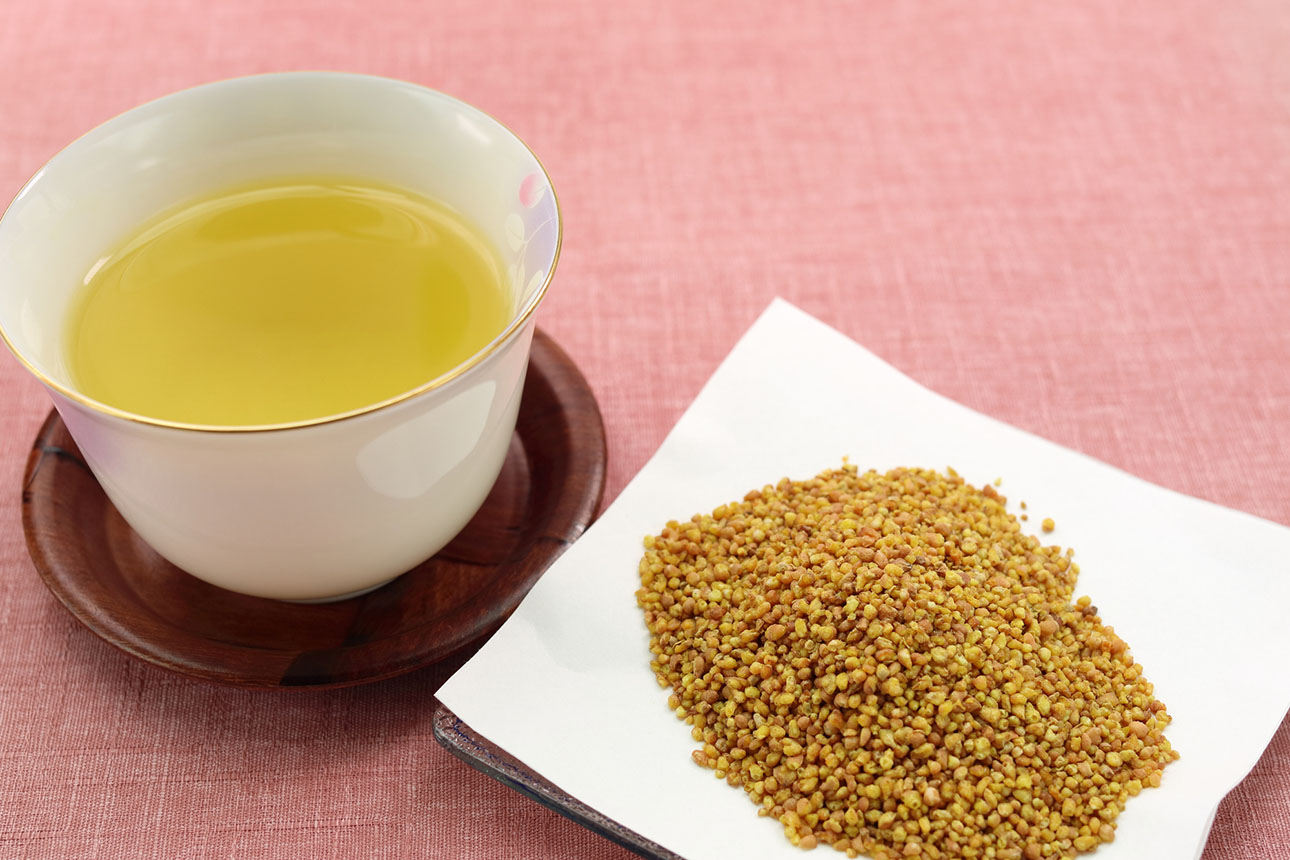
Nutritionally speaking, soba is a powerhouse. Alongside its carbohydrates, which provide energy, soba contains a well-balanced mix of protein, vitamins, and essential minerals like iron and magnesium.
One of soba’s standout health components is rutin, a compound known for its ability to strengthen blood vessels, reduce blood pressure, and offer antioxidant benefits. In addition, soba has a low glycaemic index (GI), meaning it helps prevent sudden spikes in blood sugar—making it a great option for those mindful of blood sugar control.
Soba is also rich in dietary fibre, which supports digestion, improves nutrient absorption, and helps regulate appetite.
Soba in Japanese Culture
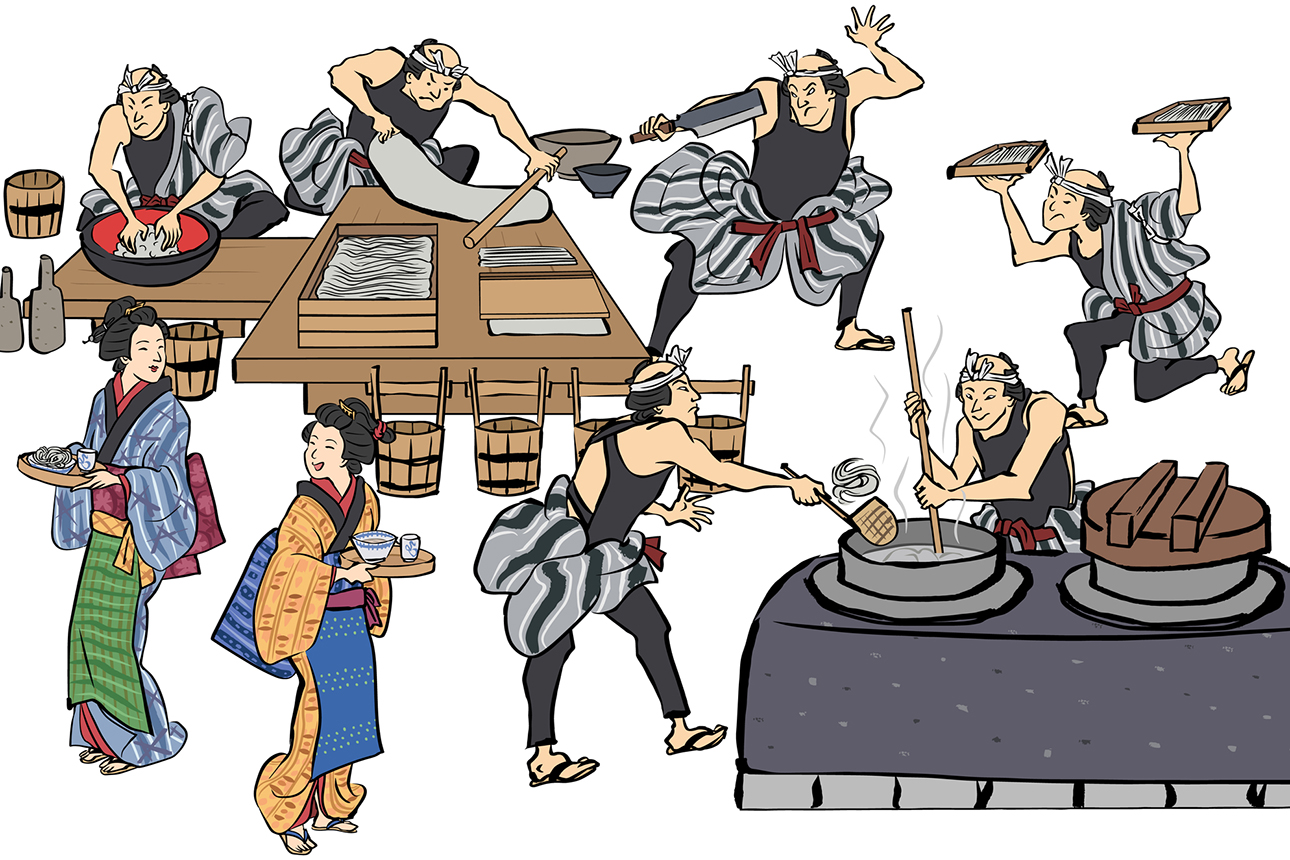
Soba is more than just a healthy food—it’s a deeply rooted part of Japanese tradition.
One of the most symbolic customs is “toshikoshi soba”, the practice of eating soba on New Year’s Eve. This long-standing tradition is still common in many households across Japan. The long, slender noodles symbolize a wish for longevity, and the act of cutting the noodles while eating is believed to let go of the hardships of the past year. It’s also said to represent the hope that family bonds will remain long and strong into the new year.
How to Eat Soba Like a Local
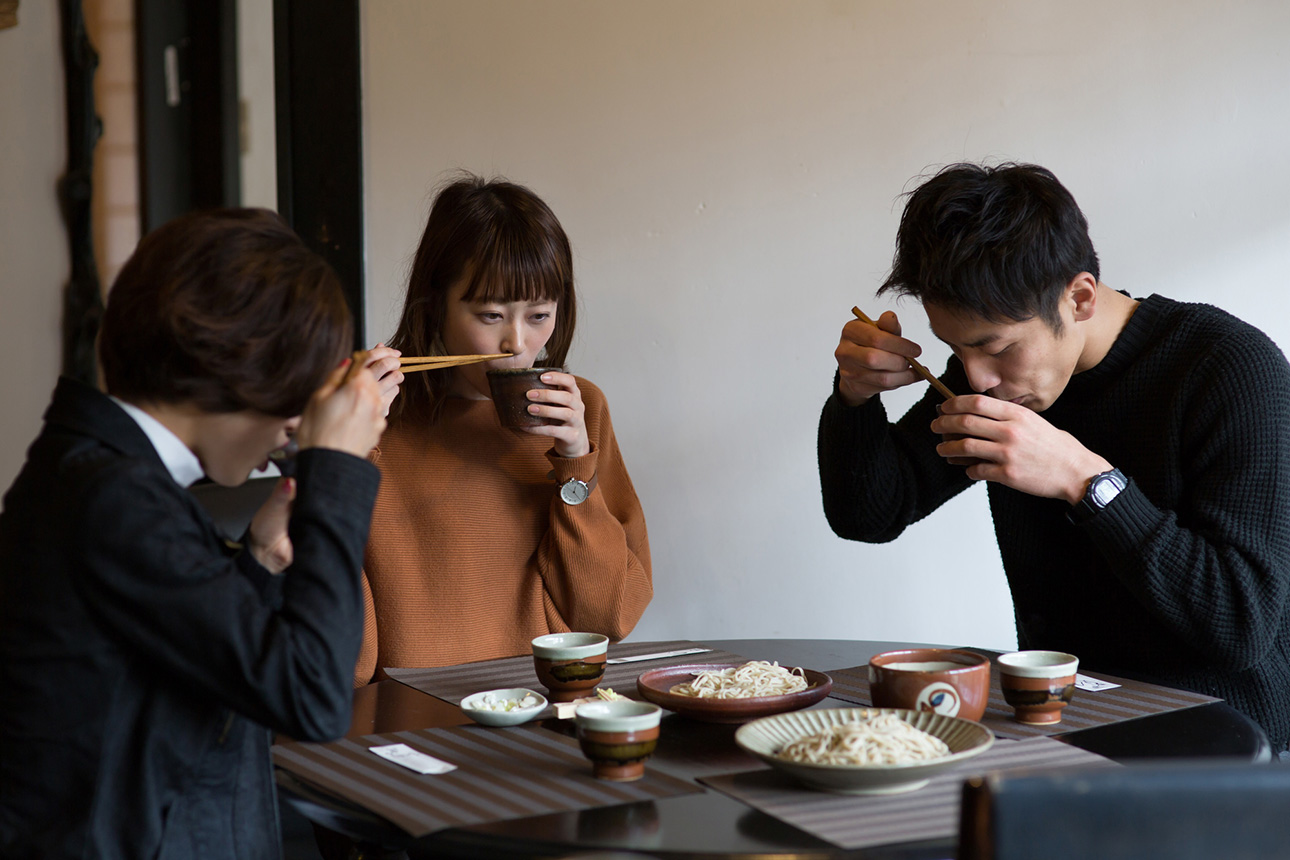
If you’ve ever watched Japanese people eat soba, you may have noticed the distinctive slurping sound. While it may seem impolite in other cultures, slurping noodles is encouraged in Japan—especially with soba. It enhances the tasting experience by allowing you to enjoy the noodle’s full aroma. Don’t be shy—give it a try like the locals!
And when you’ve finished your noodles, you may be served a curious-looking kettle filled with cloudy water. This is called “sobayu”—the water used to boil the soba. Slightly thick and infused with soba’s flavour and nutrients, sobayu is customarily sipped after the meal, sometimes mixed with the remaining dipping sauce. It’s a soothing and satisfying way to end your soba experience—and a beloved part of the meal for many in Japan.
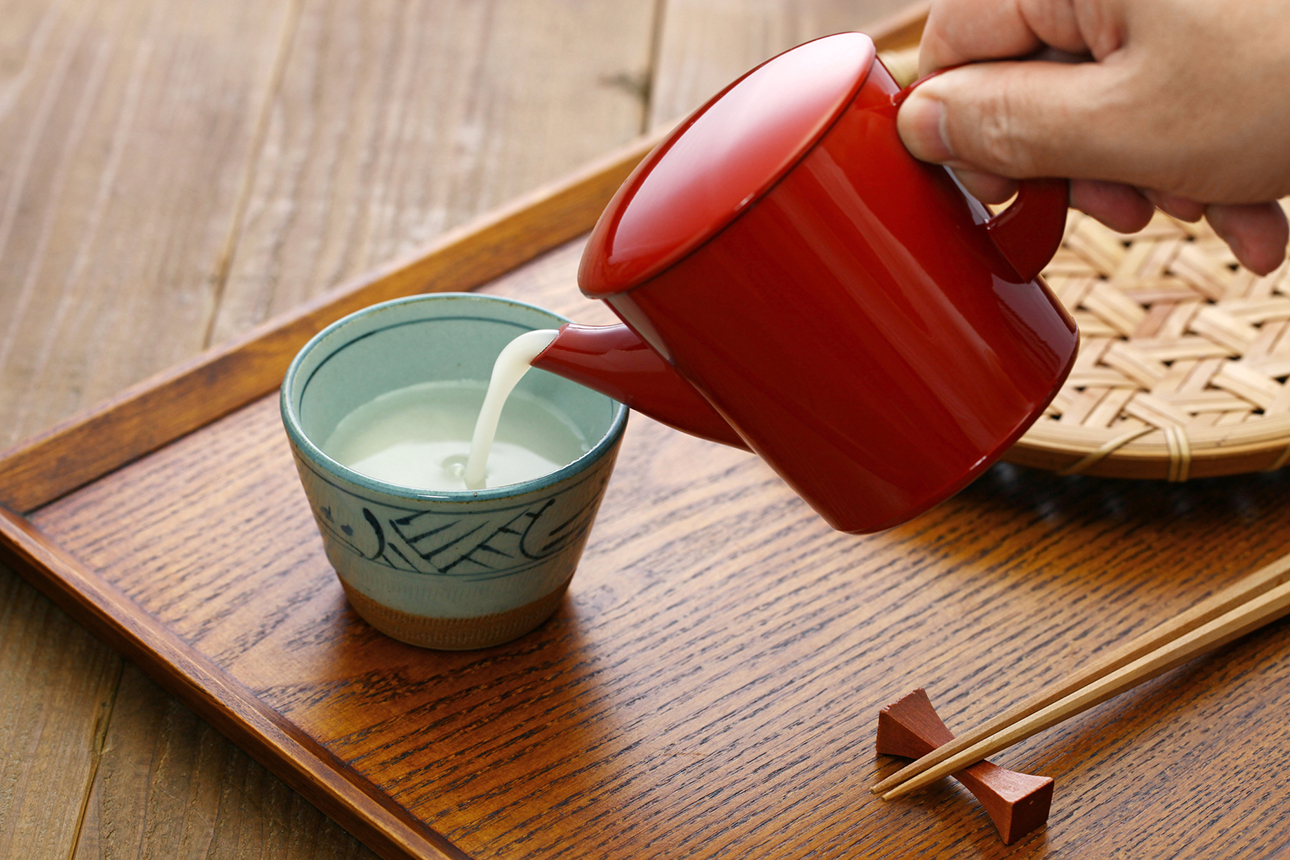
So whether you’re savouring the noodles, slurping in traditional style, or enjoying a warm cup of sobayu, soba offers a truly immersive and delicious window into Japanese food culture.
Soba Is Just the Beginning: A World of Delicious Variations
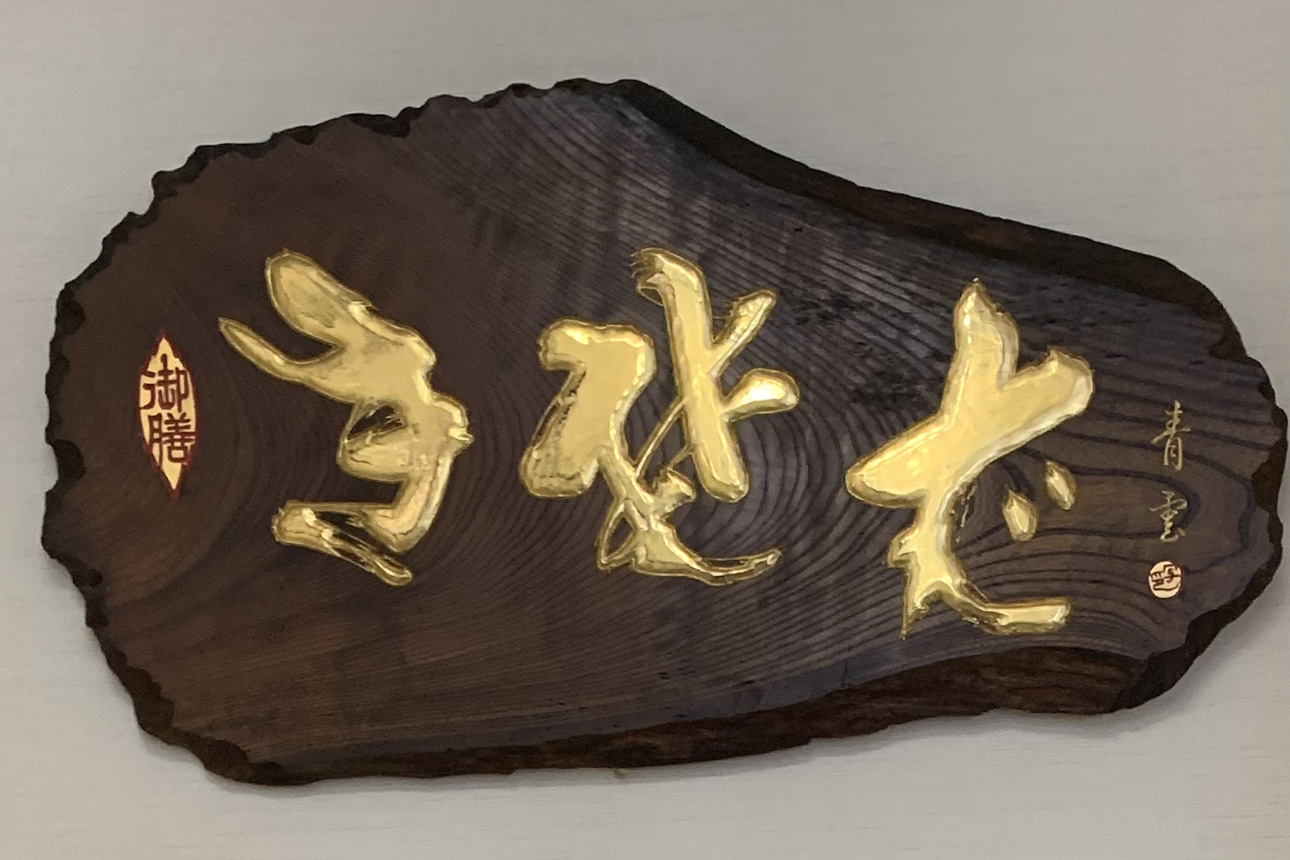
Do you think all soba is the same? In fact, there’s a surprising variety waiting to be discovered. One key difference lies in the ratio of buckwheat flour to wheat flour—an element that affects everything from the noodle’s texture and flavour to its very name.
While most soba is made with a mix of buckwheat and wheat flour (the gluten in wheat helps the dough hold together), some regions use natural binders like grated yam (yamaimo) instead.
Let’s explore the fascinating world of soba variations!
Juwari Soba (100% Buckwheat)
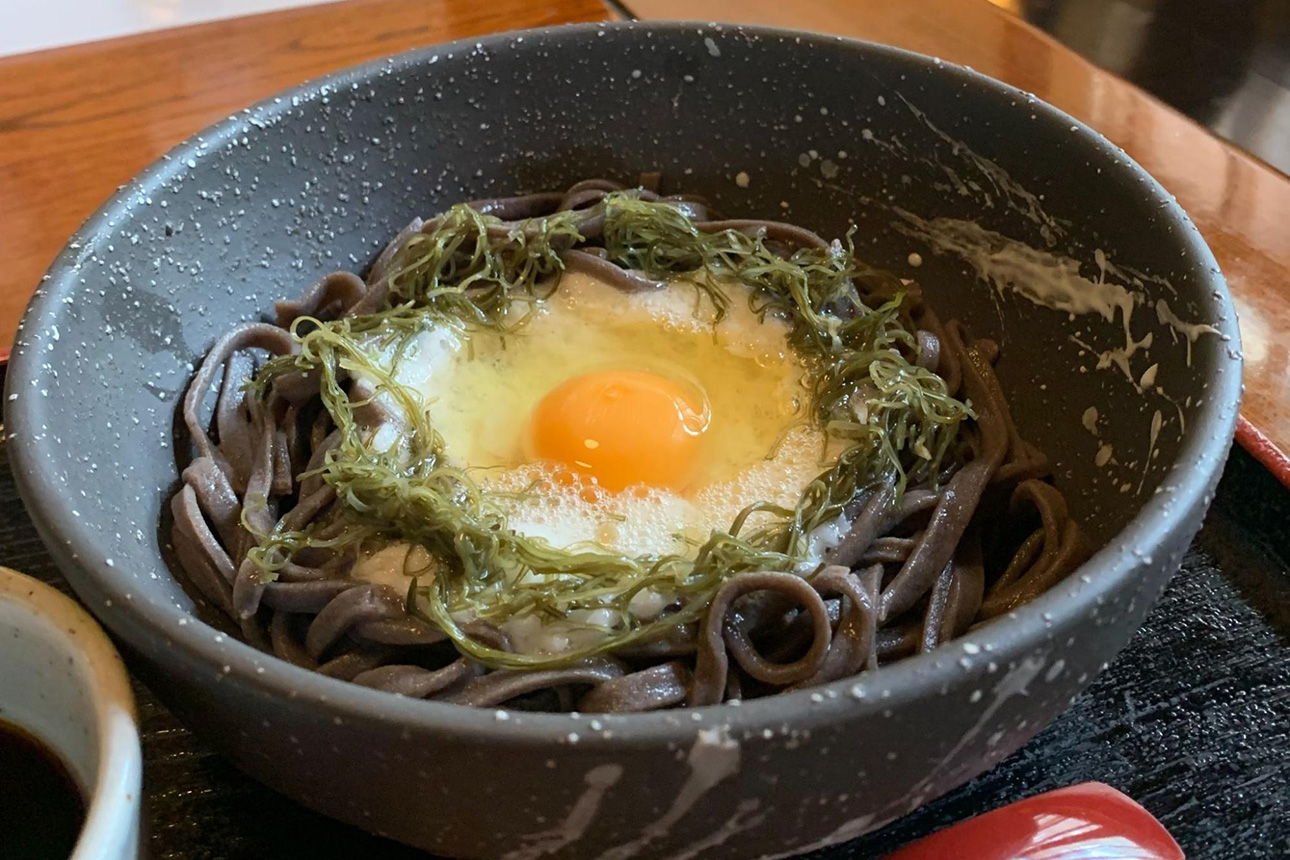
Made with nothing but pure buckwheat flour, this type of soba is known in Japan as juwari soba, meaning “100%”. With no added wheat, it offers the purest flavour and aroma of buckwheat, along with a slightly crumbly texture.
Because it contains no gluten, crafting these noodles requires a high level of skill—only experienced soba artisans can achieve a smooth, consistent result using just buckwheat flour and water.
Juwari soba is perfect for people with gluten intolerance or wheat allergies, as well as those who choose to follow a gluten-free lifestyle for health or performance reasons. While it may have a slightly drier texture than blended soba, it delivers the most authentic and intense soba experience.
Nihachi Soba (80% Buckwheat, 20% Wheat)
Perhaps the most commonly found soba in Japan is nihachi soba—literally “two-eight soba,” referring to the 20% wheat and 80% buckwheat blend.
Thanks to the wheat flour, this soba has a firmer, more elastic texture than 100% buckwheat noodles, making it easier to eat and less likely to break. The combination of wheat’s chewiness and buckwheat’s earthy flavour results in a well-balanced, smooth noodle that’s approachable even for soba beginners.
Of course, soba shops across Japan offer many other blends. Each shop may adjust the buckwheat-to-wheat ratio according to their house style or preference.
As the buckwheat content increases, so does the noodle’s aroma and depth of flavour. Conversely, lower buckwheat ratios produce a smoother, more neutral noodle that resembles pasta and is easier for first-timers to enjoy.
Soba variations don’t stop at flour ratios—there are also regional and stylistic types, each with its own charm.
Sarashina Soba
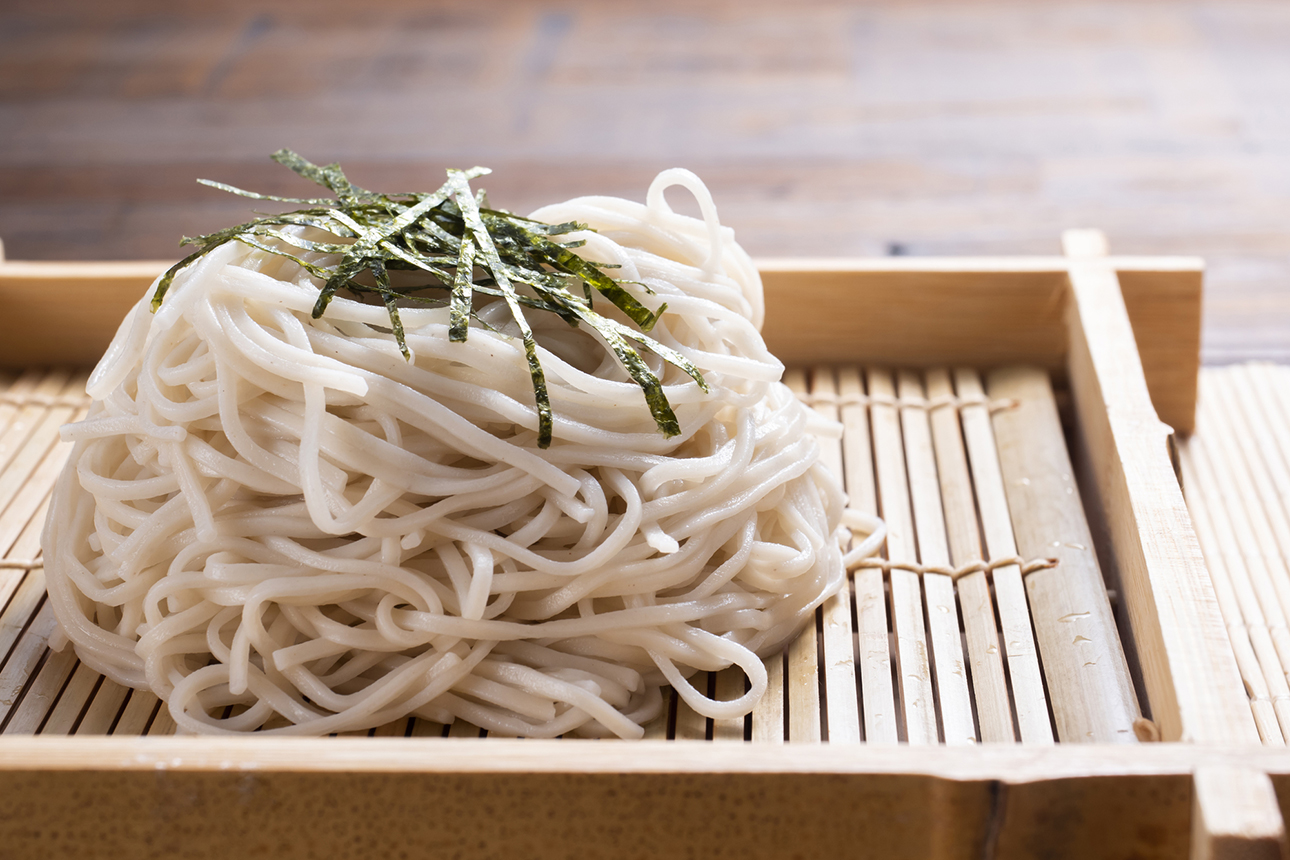
The most distinctive feature of Sarashina soba lies in its elegant white noodles, made exclusively from the innermost part of the buckwheat kernel—the core of the endosperm—which is the first to be extracted when the buckwheat is milled. Because it doesn’t contain any of the darker outer husk, the noodles retain a pure white colour, giving them a refined, premium appearance.
Sarashina soba is known for its delicate flavour and smooth texture. While the signature aroma of buckwheat is subtle, you can enjoy a gentle sweetness and firm bite with every mouthful.
Yabu Soba
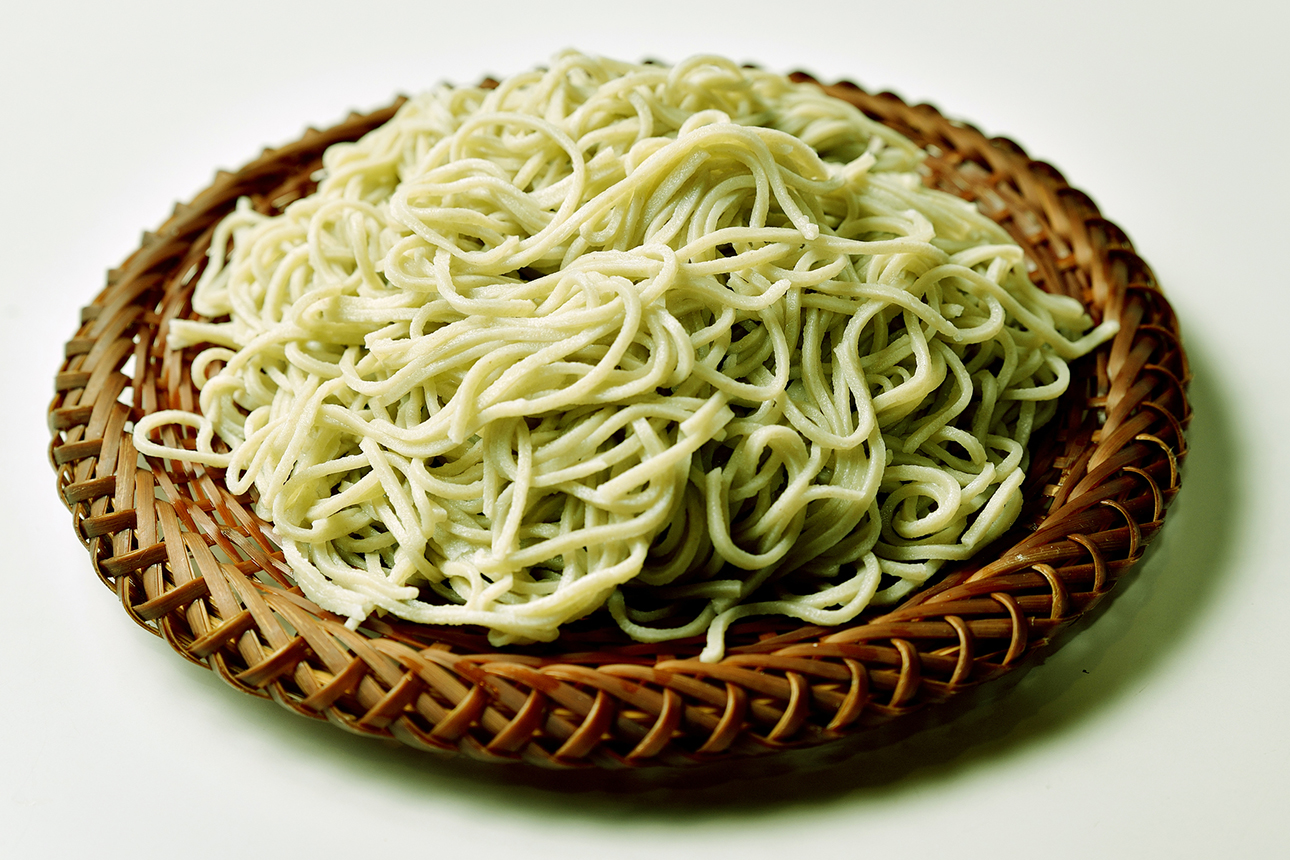
Characterized by its greenish tint and bold, salty dipping sauce, Yabu soba is known for its rich flavour and rustic charm. This style is said to have originated in the late Edo period, at the end of the 19th century, in a soba shop nestled in a thicket—“yabu” in Japanese—which gave it its name. The flour is made by grinding part of the buckwheat kernel, including the outer husk, resulting in a darker colour and more robust flavour. One of Yabu soba’s distinctive features is its wonderful aroma, especially noticeable when slurped. The dipping sauce is intentionally more concentrated and saltier to complement the soba’s strong flavour.
Sunaba Soba
This style of soba has its roots in Osaka and is considered one of the oldest soba traditions. The name “Sunaba” comes from the area where the original shop was located.
Sunaba soba typically uses smooth-textured noodles, paired with a sweet, rich dipping sauce.
Inaka Soba
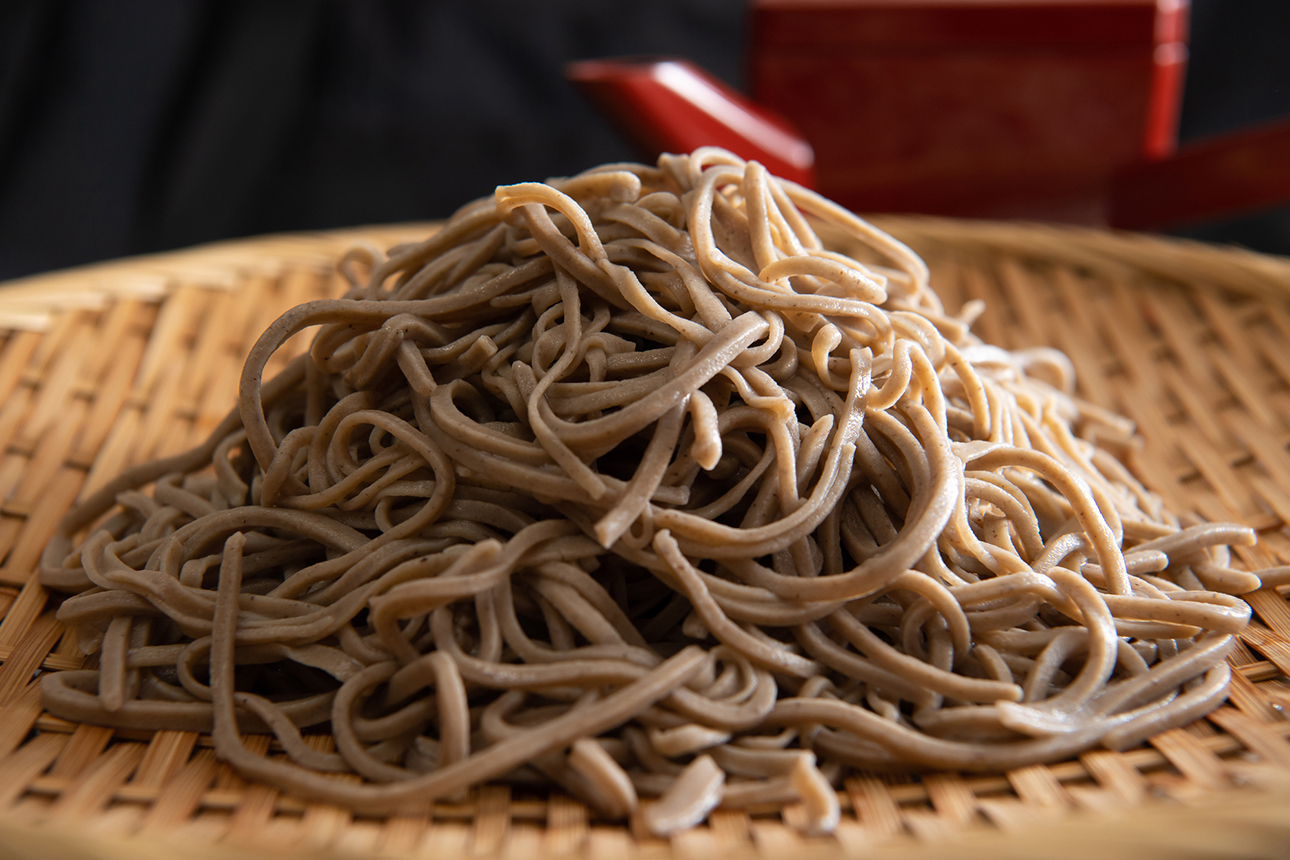
Think of this as the brown rice of the soba world. Inaka soba is made using coarsely ground buckwheat flour—including the outer husk—giving the noodles a dark colour, thick body, and robust aroma.
It’s highly nutritious and bursting with buckwheat’s natural flavour, though some may find it slightly bitter due to the husk content. Inaka soba stands in stark contrast to the refined Sarashina soba—it’s hearty, rustic, and full of character.
The word “inaka” means “countryside” in Japanese, and the name reflects the noodle’s humble origins and bold, unrefined charm, a perfect balance to the polished city-style soba of Edo (modern-day Tokyo).
As you can see, soba isn’t just one dish—it’s a whole world of flavours and textures that vary by ingredients, technique, and region. Depending on how the buckwheat groats are ground and sifted, the same grain can yield flours with different colours and flavours. Across Japan, countless varieties of soba exist, each with its own character and charm. Gaining a deeper understanding of these differences will enrich your next soba experience.
Now, let’s return to our journey through Hokkaido, where delicious soba awaits to make your travels even tastier.
See It, Taste It: The Seasonal Charms of Hokkaido’s Buckwheat
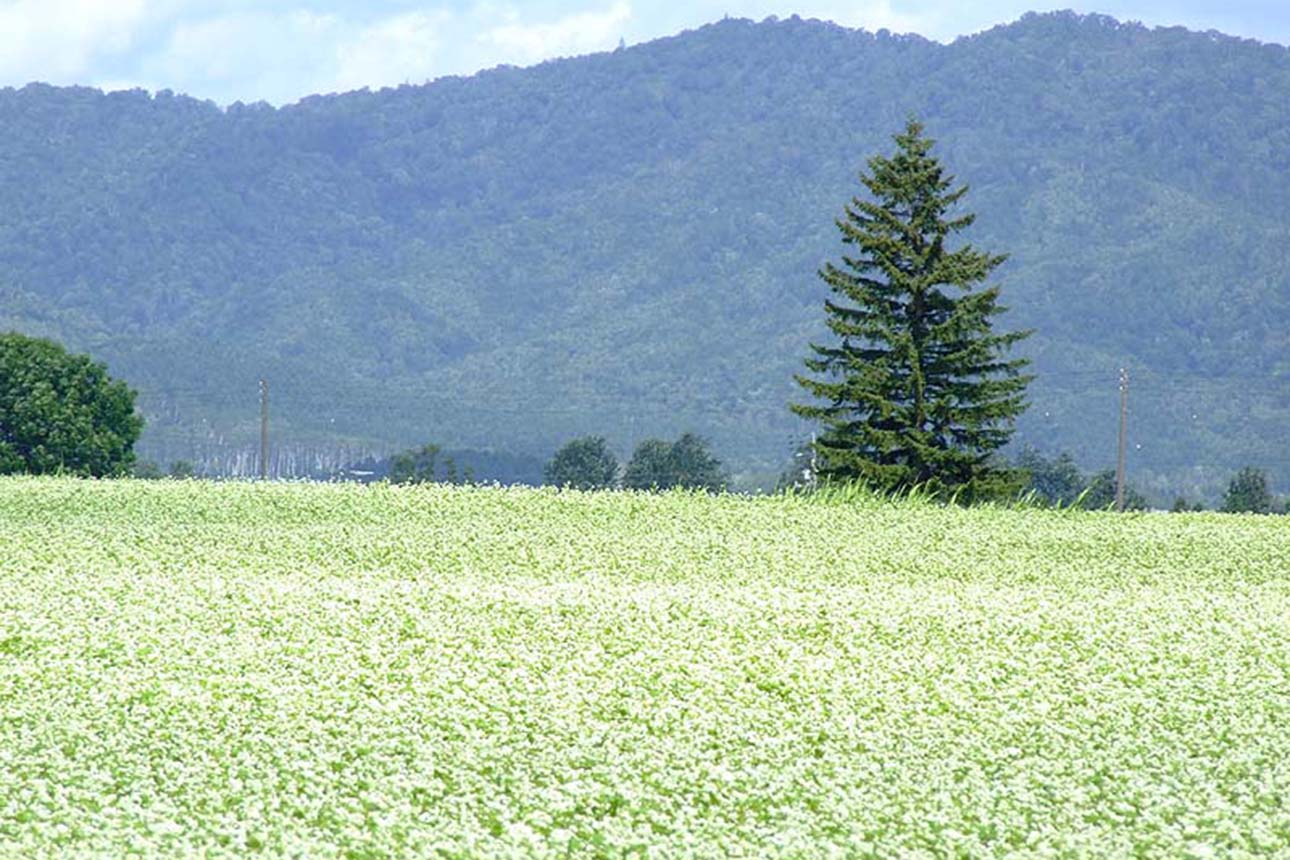
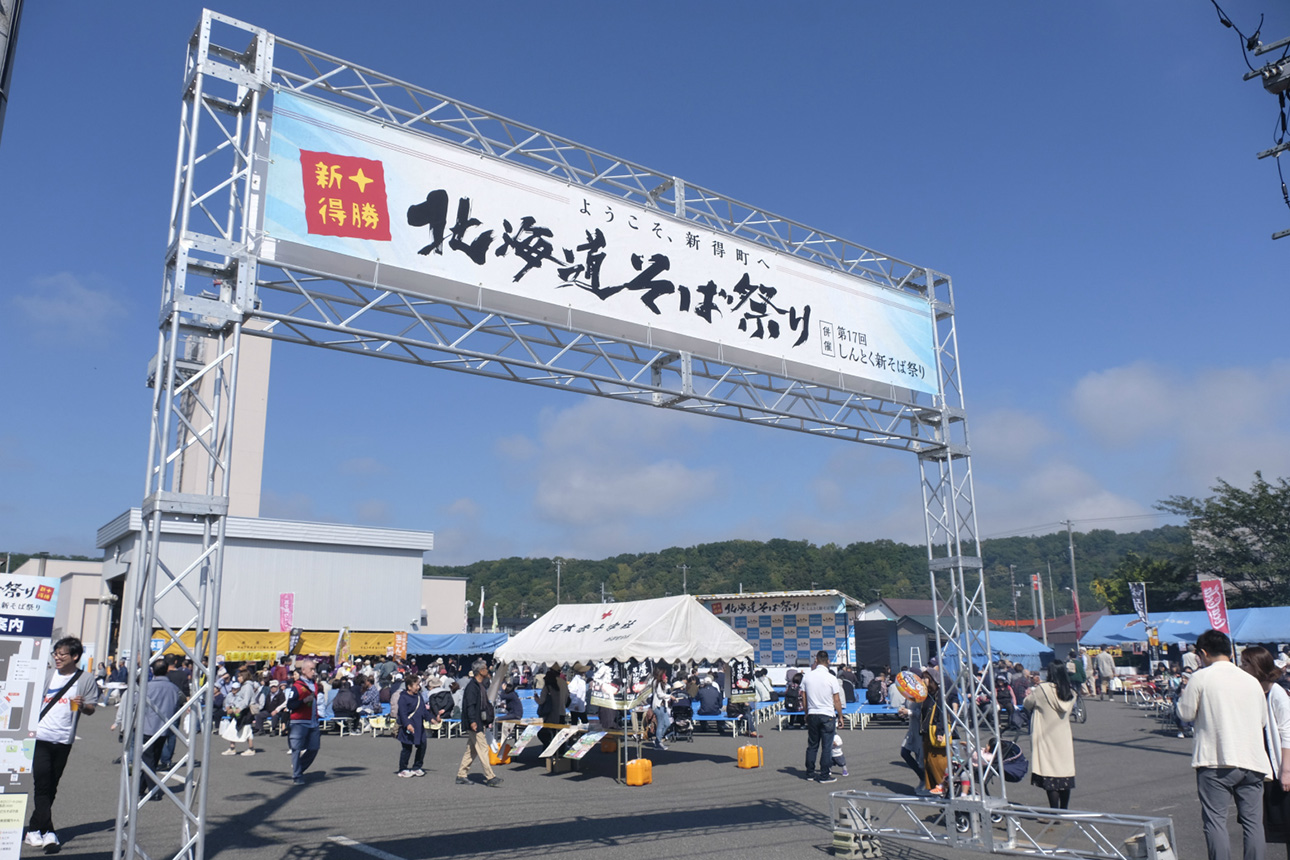
In fact, Hokkaido is the largest producer of buckwheat in Japan, accounting for more than 40% of the nation’s total harvest. Did you know that? Thanks to its cool climate, low humidity, and dramatic temperature differences between day and night, Hokkaido offers ideal conditions for growing buckwheat. Soba cultivated in these rich northern soils is renowned for its robust aroma and naturally sweet, full-bodied flavour. It’s intensely flavourful—and absolutely delicious.
Horokanai, located in the central part of Hokkaido, is Japan’s top buckwheat-producing town. It’s also home to the country’s only high school offering a specialized curriculum in soba-making. Students there master professional soba techniques and often go on to work at soba restaurants, not only in Tokyo but even abroad in places like Germany.
The Sorachi region, easily accessible from Sapporo, includes Fukagawa, the second-largest buckwheat-producing town, and nearby Takikawa, where soba is actively cultivated and featured in popular local dishes made with their own harvest. Soba production also thrives across northern Hokkaido, in areas such as Otoineppu and Asahikawa. In eastern-central Hokkaido, the Tokachi region—including Shintoku, known for its soba festival—is another major hub. Towns like Teshikaga in eastern Hokkaido are also famous for their soba fields.
So, when you travel through Hokkaido, why not take a break from ramen and try the fresh, flavourful soba grown in this beautiful land? Let me take you on a journey to discover the unique soba culture of Hokkaido.
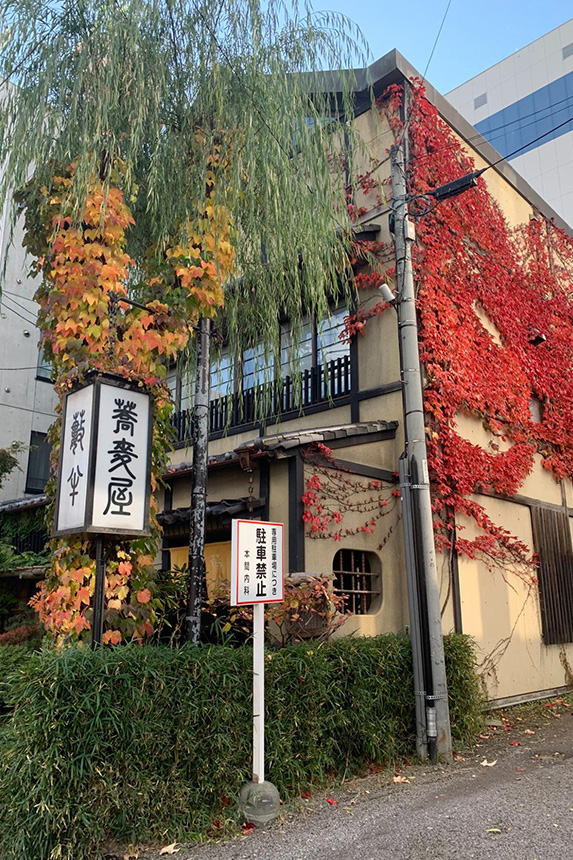
While soba is enjoyed year-round across Japan, autumn is the ideal time to savour it in Hokkaido. The arrival of “new soba,” made from freshly harvested buckwheat, is one of the season’s most anticipated moments. This seasonal delicacy is cherished for its vivid flavour and rich aroma, and many look forward to tasting it each year. In Shintoku, the Shin-Soba Festival draws crowds eager to sample the season’s first noodles, and across the region, new soba typically appears on menus from September to October, becoming one of autumn’s classic flavours.
But there’s more to soba than just its taste. Did you know that buckwheat fields in bloom are breathtakingly beautiful? When in full flower, these fields resemble pure white carpets stretching across the landscape. Blossoms begin to appear from July, transforming the land into serene seas of white.
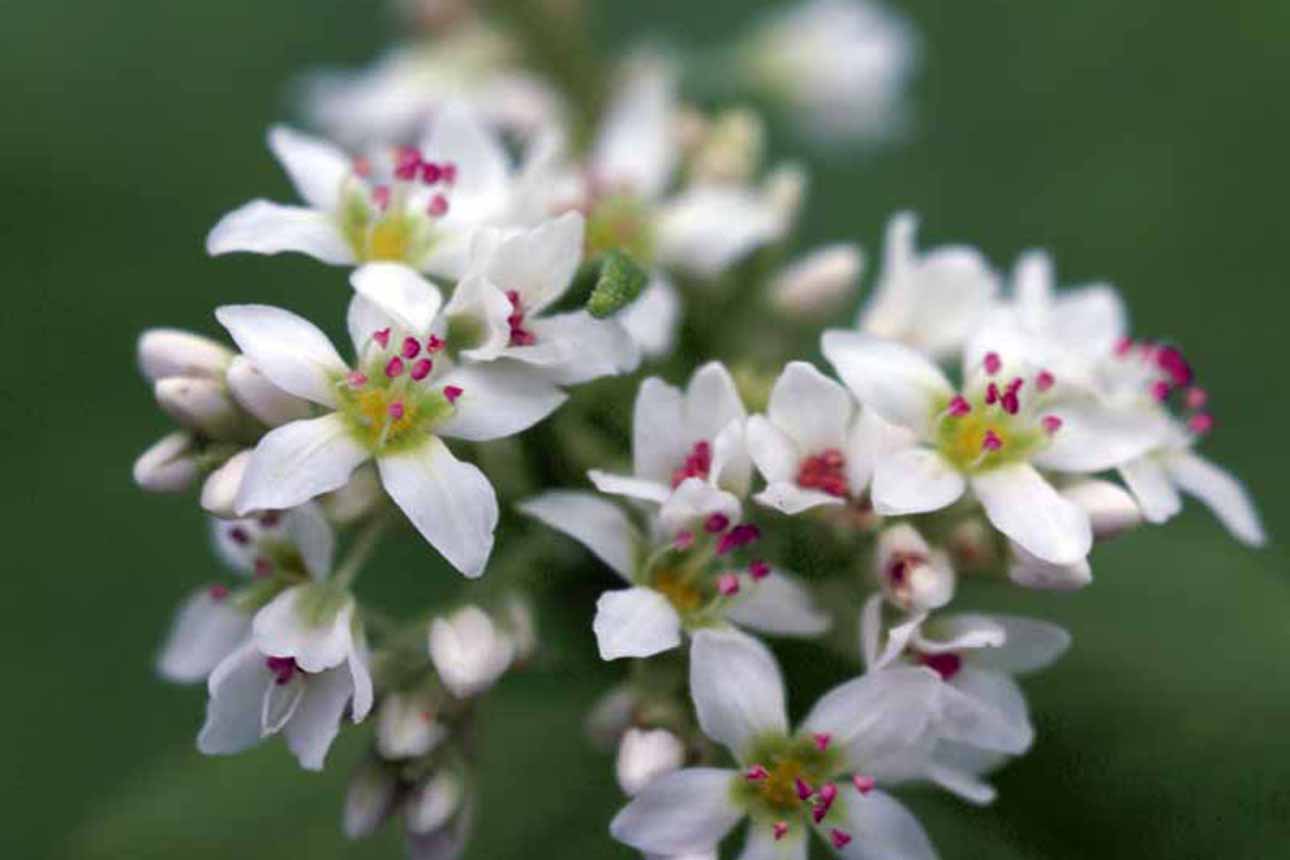
Horokanai is famous for its picturesque soba fields and scenic viewpoints that attract visitors each summer. In Shintoku, the “Soba Road”—a roughly 1.5 kilometre stretch along Route 38 between Karikachi Pass and downtown—features buckwheat fields that bloom for about a month in early summer. These delicate white flowers, set against Tokachi’s famously blue skies, create a stunning, photogenic scene.
While Hokkaido is renowned for its colourful flower gardens, the blossoms of crops like soba and potatoes—blanketing the farmland—are increasingly appreciated. If you’re visiting Hokkaido in summer, don’t miss the chance to include a soba flower viewing spot in your journey!
A Journey Through Hokkaido’s Unique Soba Culture

Soba is a beloved part of Japanese culinary culture, but Hokkaido brings its own distinctive flair to the table. Let’s take a soba-filled journey through Hokkaido and discover how the flavours and styles differ from region to region!
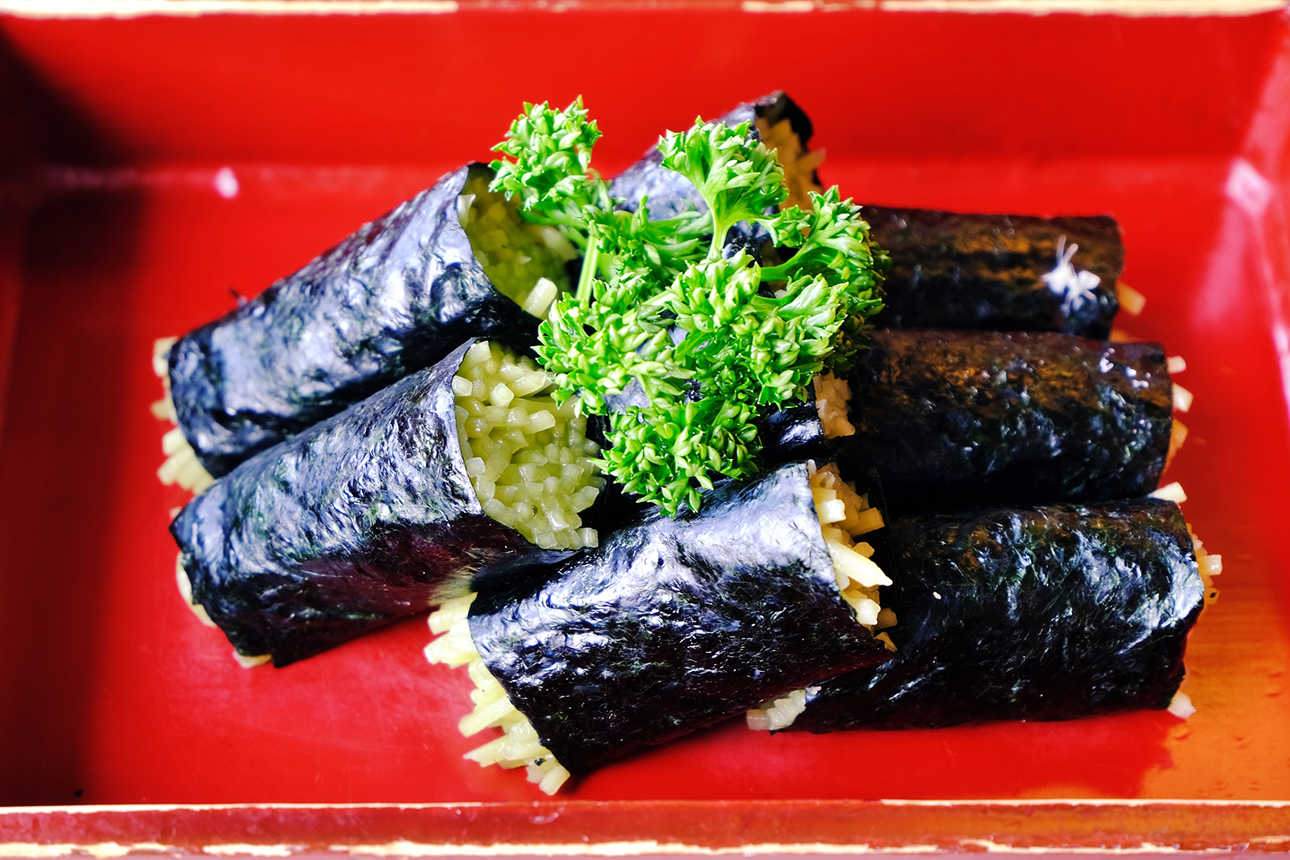
We begin in Kushiro, located in eastern Hokkaido—one of the top soba regions in the prefecture. The city is said to have over 50 soba restaurants, and as you walk through town, one thing stands out: most shops serve green soba noodles. This vibrant colour comes from chlorella, a type of freshwater green algae, which is blended into white Sarashina soba flour. This unique green soba has been loved in the region for nearly 150 years. One local dish not to miss is soba sushi, where soba noodles are wrapped in seaweed and dipped in soy sauce—just like sushi!

In the far north of Hokkaido, the tiny village of Otoineppu is famous for its soba production—especially its striking black soba. Made from buckwheat ground with the outer husk still intact, this soba is thick, aromatic, and has a deep, earthy flavour. Despite its rustic look, it’s surprisingly smooth and satisfying to eat. Many soba enthusiasts travel from across the country just to sample this unique local specialty.
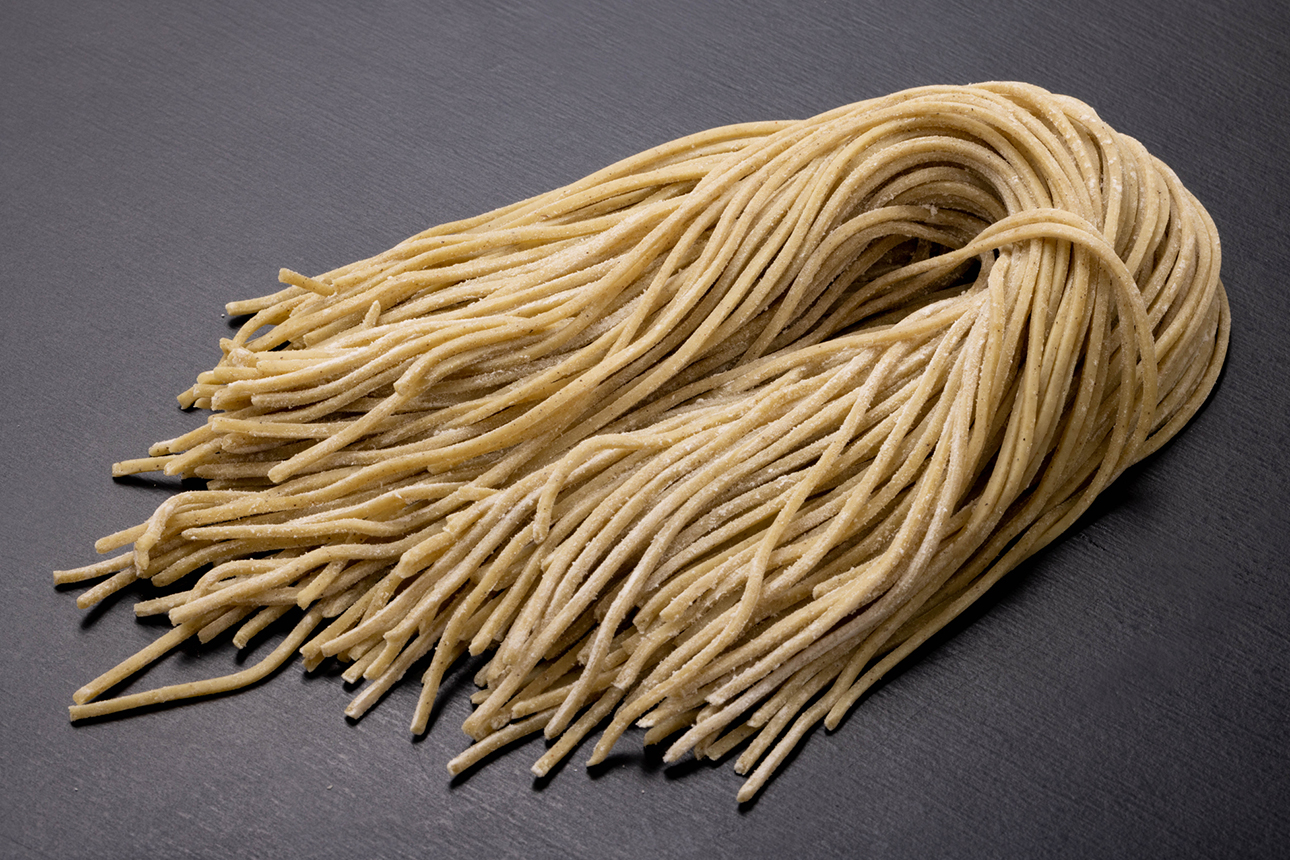
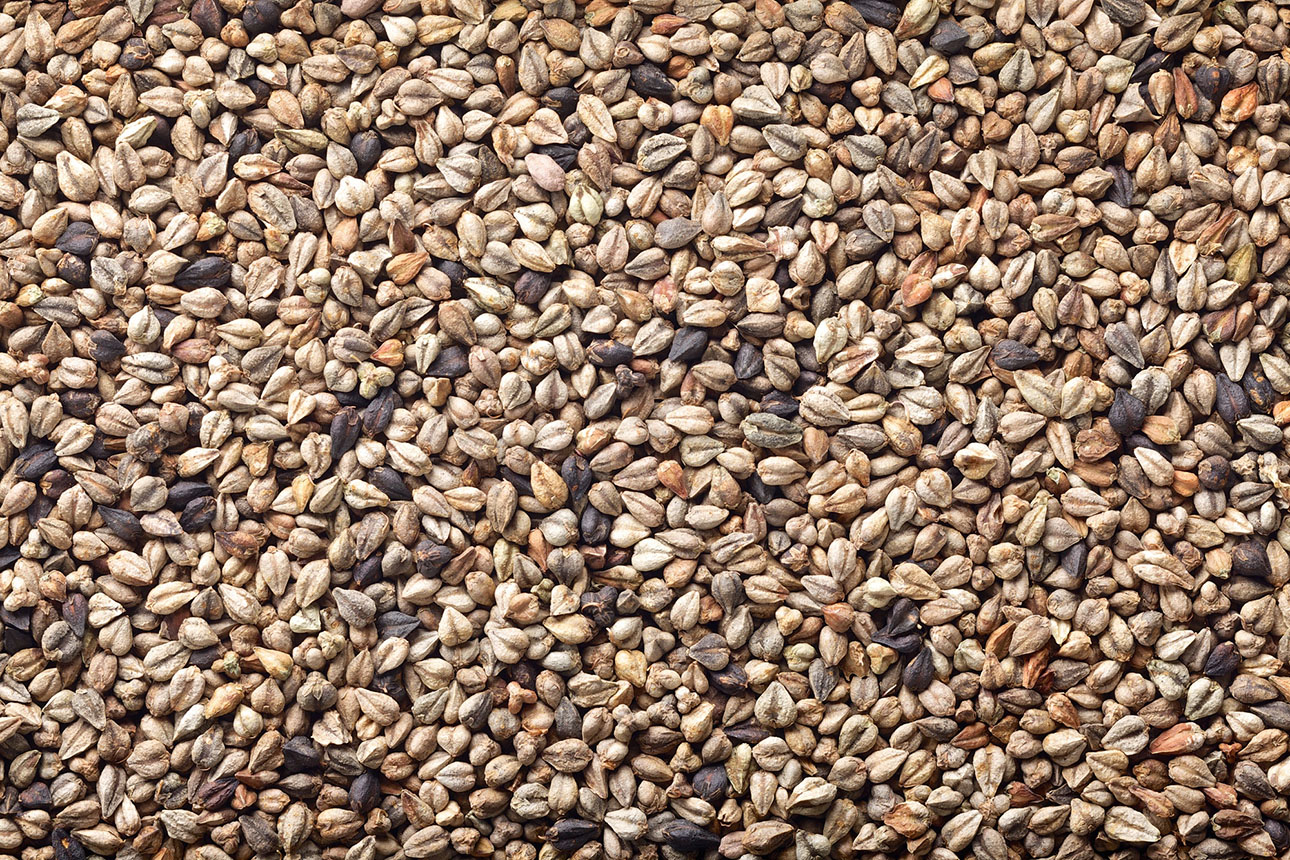
Facing the Okhotsk Sea, Oumu is Japan’s largest producer of Dattan soba—also known as Tartary buckwheat noodles. The word “Dattan” is said to originate from an old term for the nomadic Tatar people of Mongolia. Dattan soba is made from a unique buckwheat variety known for its exceptional nutritional value—especially rutin, which can be over 100 times higher than in regular soba. Slightly bitter but incredibly healthy, it’s often referred to as a kind of “medicinal soba”. Today, it’s a specialty product of Oumu.
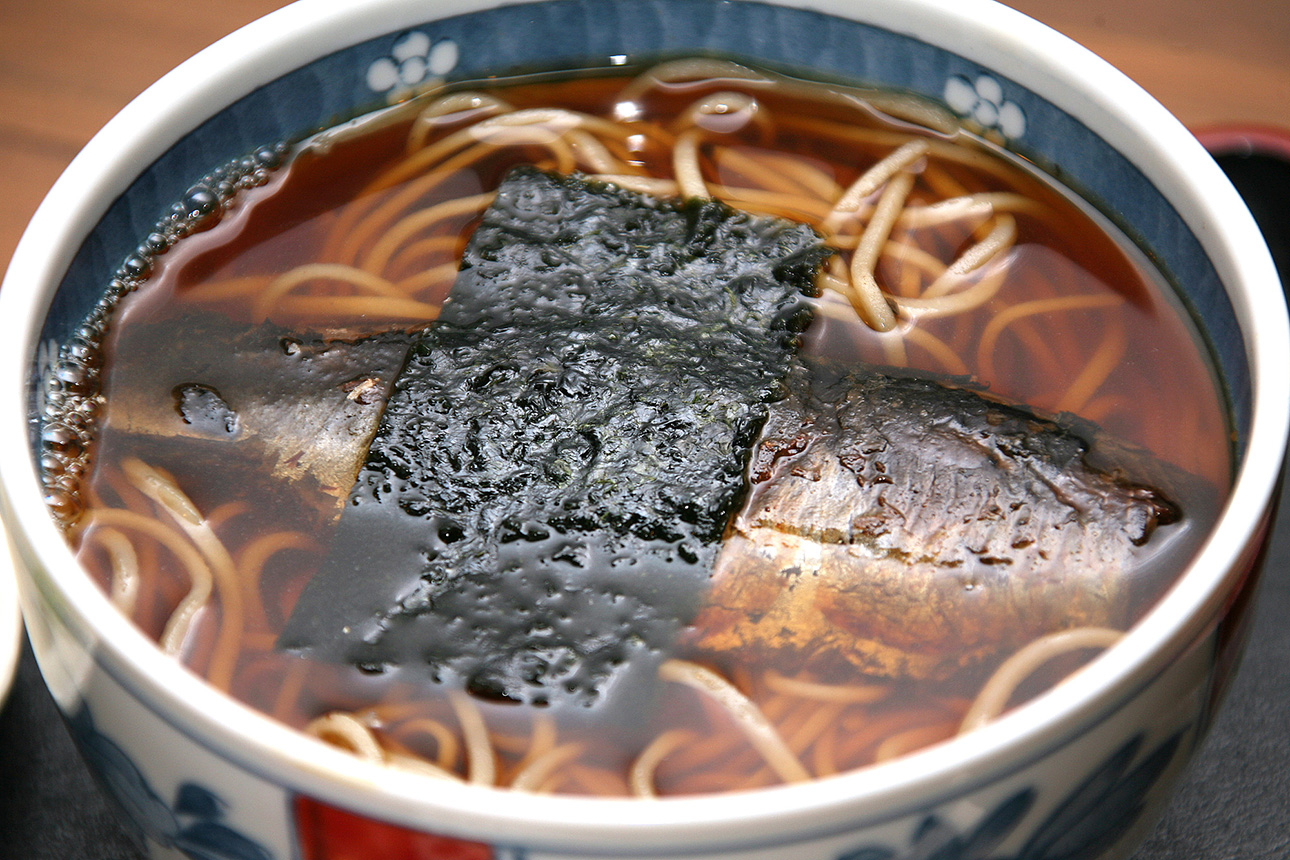
Along the Sea of Japan coast, you’ll find many places in Hokkaido that serve nishin soba—a traditional dish featuring a piece of sweet-simmered dried herring placed on top of warm soba noodles. This local favourite has been enjoyed for over a century in areas where herring fishing once flourished. Hokkaido’s nishin soba traces its roots back to the port town of Esashi, where long-established soba restaurants still attract visitors from across Japan. In Otaru, a historic port town near Sapporo, you’ll also find charming soba restaurants—many serving nishin soba amid beautifully preserved architecture and nostalgic streetscapes.
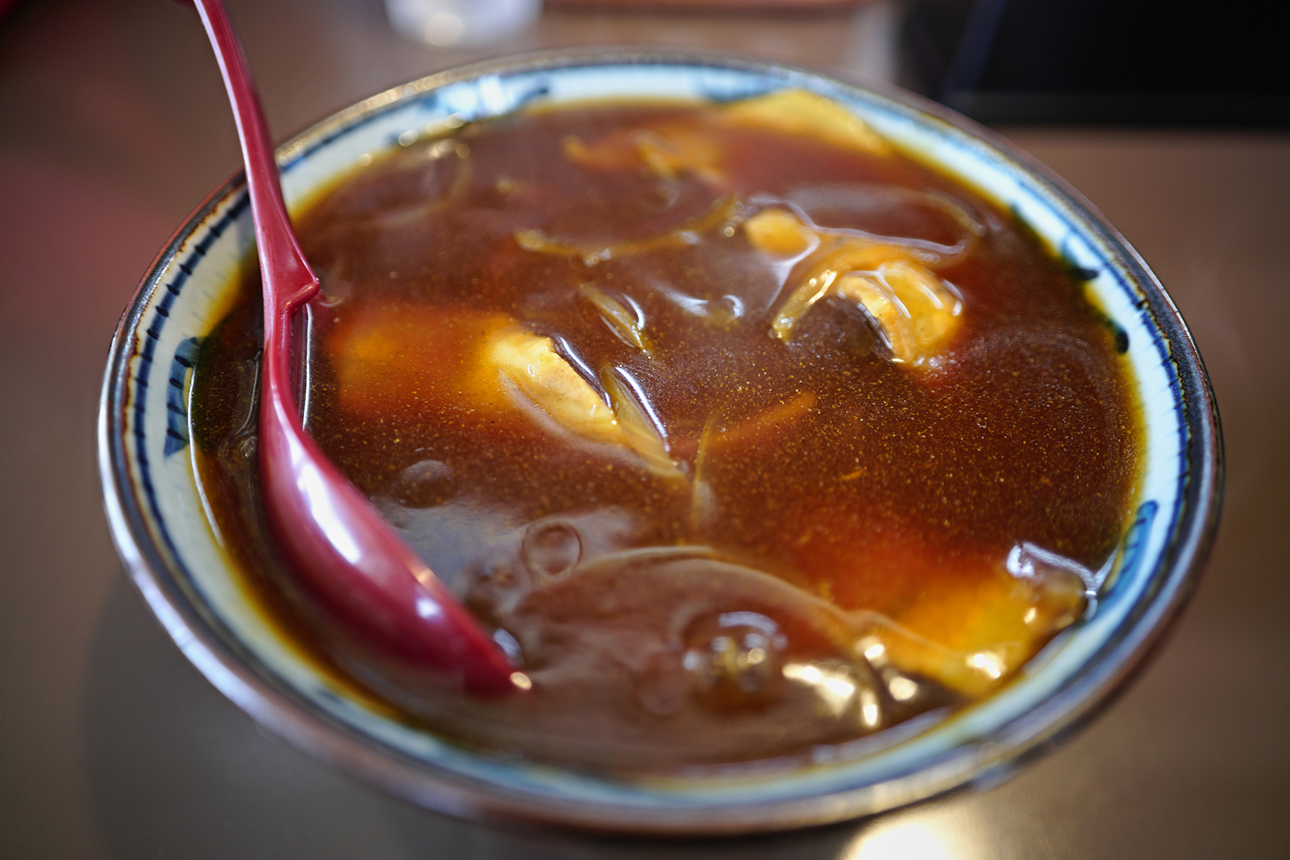
Decades ago, when Yubari, an inland city in Hokkaido, thrived as a coal mining town, one dish in particular became a favourite among miners—curry soba. Made with pork belly and onions, this hearty noodle dish features a thick, spicy curry broth poured generously to the rim of the bowl. It was a nourishing, stamina-boosting meal that helped fuel the physically demanding work of coal miners. Even today, you can find restaurants in Yubari where this nostalgic local specialty lives on.
These regional dishes are more than just meals—they’re windows into local history and everyday life. So why not try them for yourself, one bowl at a time?
In Takikawa, a city in the Sorachi region not far from Sapporo, duck soba is a regional highlight. Duck and soba have long been seen as a perfect pairing in Japanese cuisine. The rich flavour of duck enhances the intensity of the soba broth, creating a truly satisfying bowl. Takikawa is known for its locally branded duck, raised on clean Hokkaido water and air, with a special feed that gives the meat a mild, refined flavour.
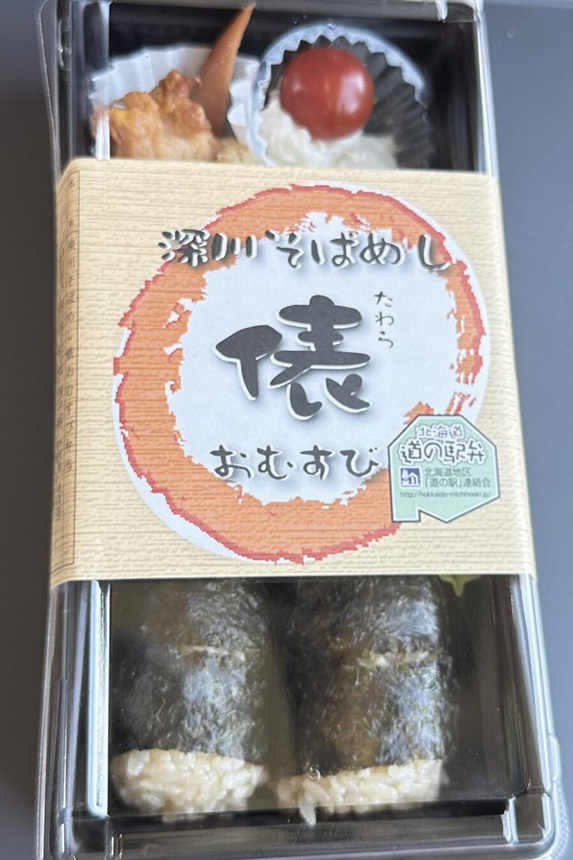
Nearby, in Fukagawa—Hokkaido’s second-largest soba-producing area and one of Japan’s top rice-growing regions—you’ll find the local favourite: Fukagawa soba-meshi. This creative dish combines soba and rice into an onigiri (rice ball), flavoured with soba dipping sauce and filled with crispy fried buckwheat kernels. Many local restaurants put their own spin on this one-of-a-kind item.
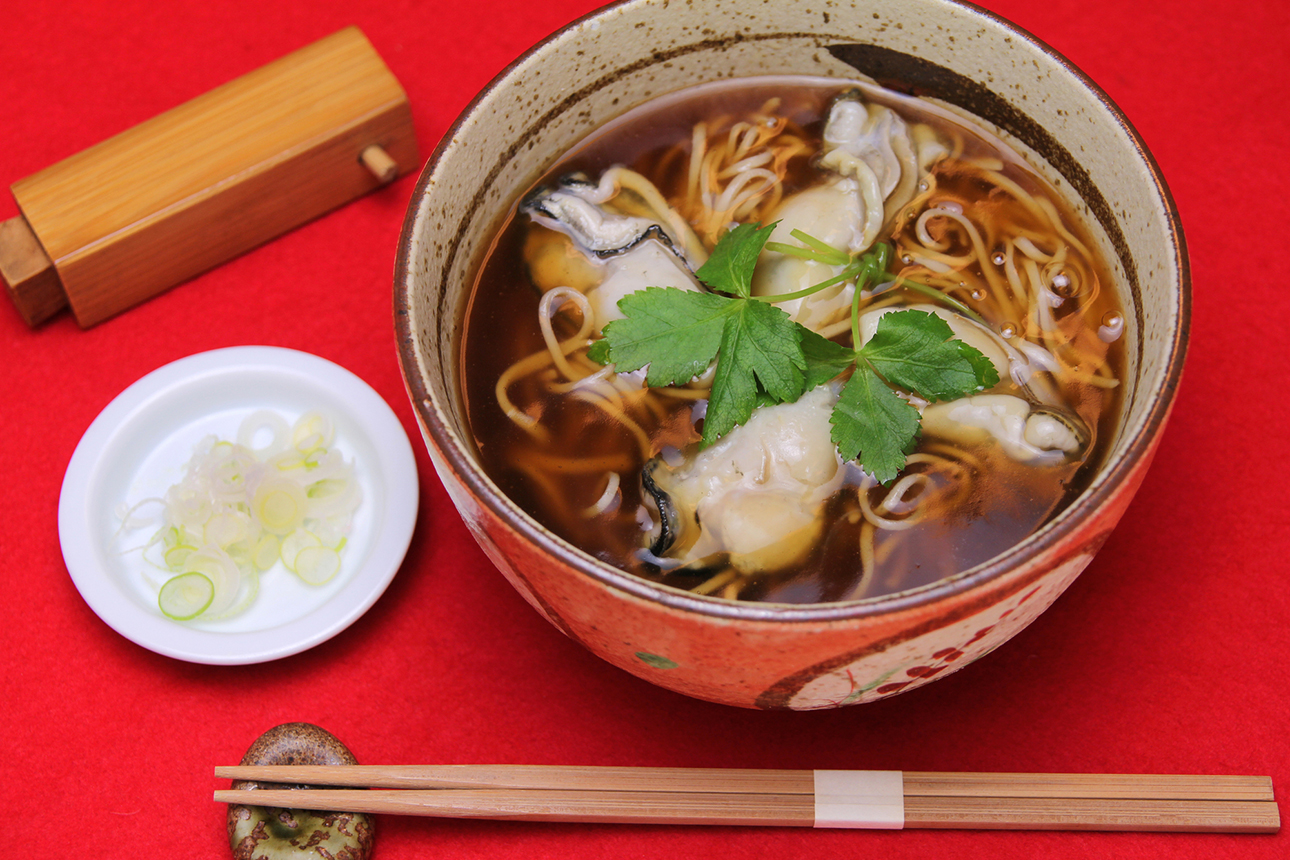
In winter, Hokkaido offers seasonal soba dishes like oyster soba. Areas such as Akkeshi and Lake Saroma in the Okhotsk region are especially known for their oysters. Visitors can enjoy oyster soba at many restaurants throughout Hokkaido during this time of year. Visit local soba shops during the colder months and enjoy this rich, warming specialty.
And finally, we can’t forget Sapporo’s famous goma soba (sesame soba)! While it’s popular throughout Hokkaido, it’s rarely seen in other parts of Japan. Nutrient-rich sesame seeds are blended into the dough, creating soba that’s both flavourful and healthy—a must-try for visitors. Well-known soba chains like Yagumo (八雲) and Yuzuru (遊鶴), both based in Sapporo, make goma soba accessible to first-time visitors with extensive menus and a wide variety of options.
Try It Yourself: A Hands-On Soba-Making Experience

To wrap up your soba journey, why not try making it yourself?
There are several places across Hokkaido where you can take part in a soba-making experience—and we can help arrange it wherever you go! At each location, a seasoned soba master will gently guide you through the process, making it easy and enjoyable even for first-timers.
Your hands-on journey begins with buckwheat flour and a large mixing bowl. Water is gradually mixed in under the expert guidance of the soba master. You’ll be amazed by the swift, precise movements of the instructor’s fingertips—try to copy their technique! It might look simple, but this step is all about precision: the water ratio is subtly adjusted depending on the day’s temperature and humidity, sometimes by just a few grams.
As the flour comes together, it forms crumbs, which slowly blend into a single dough. Then comes the kneading. But be careful—not too much! Though soba-making may seem straightforward, it requires delicate care. Under your instructor’s watchful eye, you’ll knead until the dough becomes silky smooth and ready to roll.
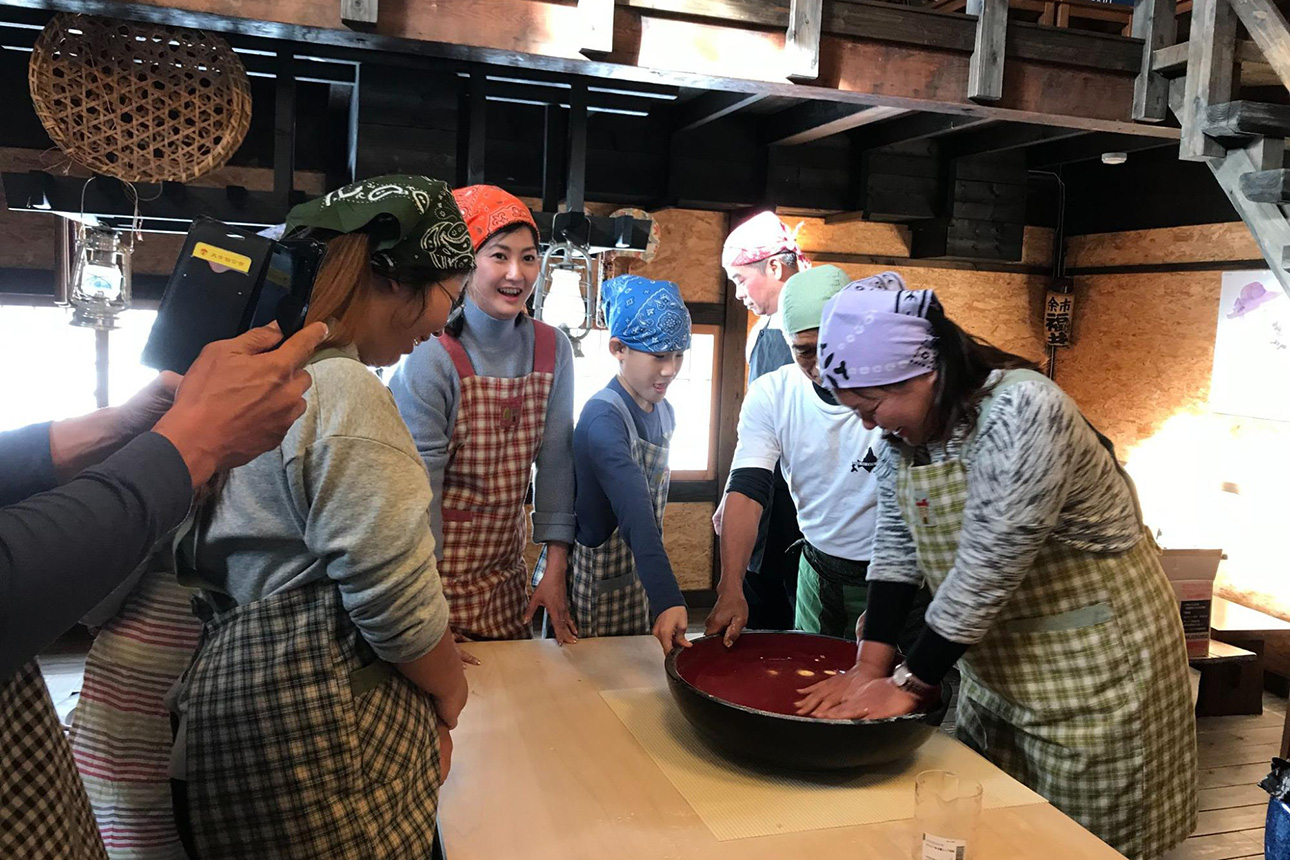
Next is the rolling stage. Using a long wooden rolling pin, you’ll stretch the dough evenly and thinly, rotating it 90 degrees at a time and wrapping it around the pin. It’s almost like watching fabric unfold—the dough transforms into a perfect square.
Now it’s time to cut the noodles. The dough is folded and sliced into thin, even strands using a special soba knife and wooden cutting guide. You might think a regular kitchen knife could do the trick—but soba knives are single-edged and designed specifically to cut long, straight noodles with precision. You may never have experienced such a crisp, satisfying cutting sensation before. It feels great to concentrate on your work, smoothly sliding the guide board and cutting rhythmically. Slice too wide, and you’ve got udon instead!
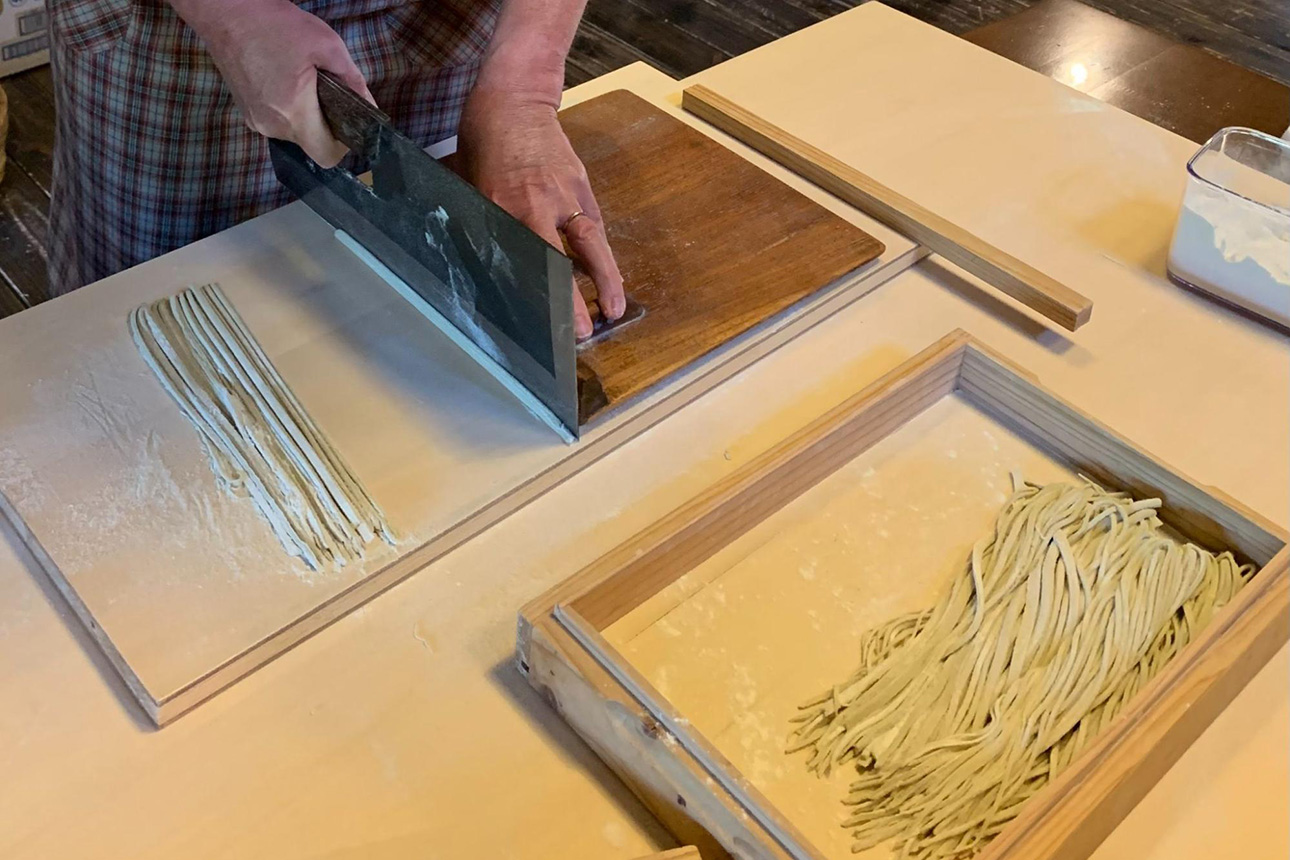
And here comes the best part—you get to eat the soba you just made, right on the spot. Freshly made soba is incredibly flavourful, and when it’s your own creation, it tastes even better. It’s an unforgettable cultural experience that stays with you long after your trip.
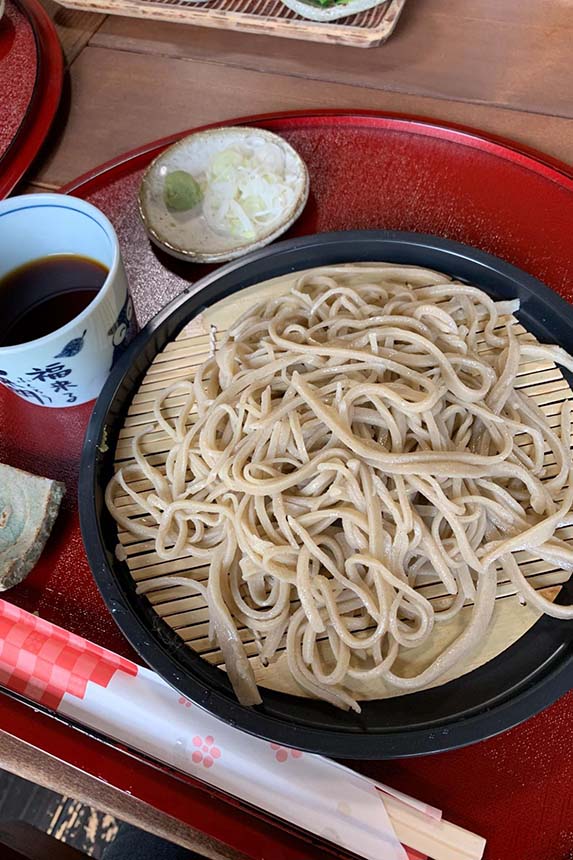
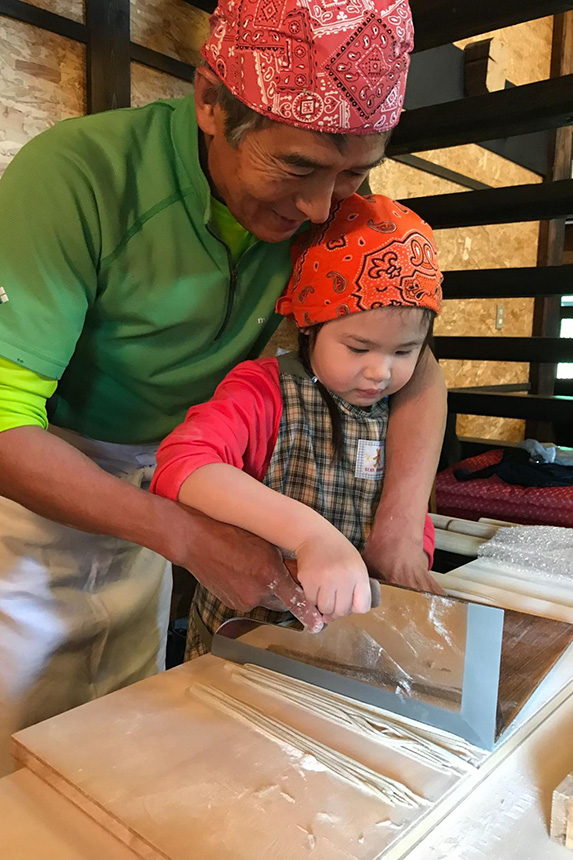
As Japan’s top soba-producing region, Hokkaido is the perfect place to taste, learn, and fall in love with soba. Whether you’re interested in culinary experiences, sightseeing, or authentic hands-on activities, let our travel agency design a one-of-a-kind journey through Hokkaido’s soba culture.
We offer a wide range of customisable tours filled with gourmet dining, sightseeing, and unique local experiences. Want to add soba-making to your itinerary but don’t know where to start? No worries—our expert travel consultants will handle everything and support you every step of the way.
Whether it’s your first trip to Hokkaido or your tenth, we’ll craft a personalised journey that exceeds your expectations. From airport pickup to drop-off, we also offer full support, including a personal driver and an English-speaking guide.
Now is the perfect time to explore. Step into the flavourful world of Hokkaido soba and discover the rich beauty of Japanese tradition—contact us today!
